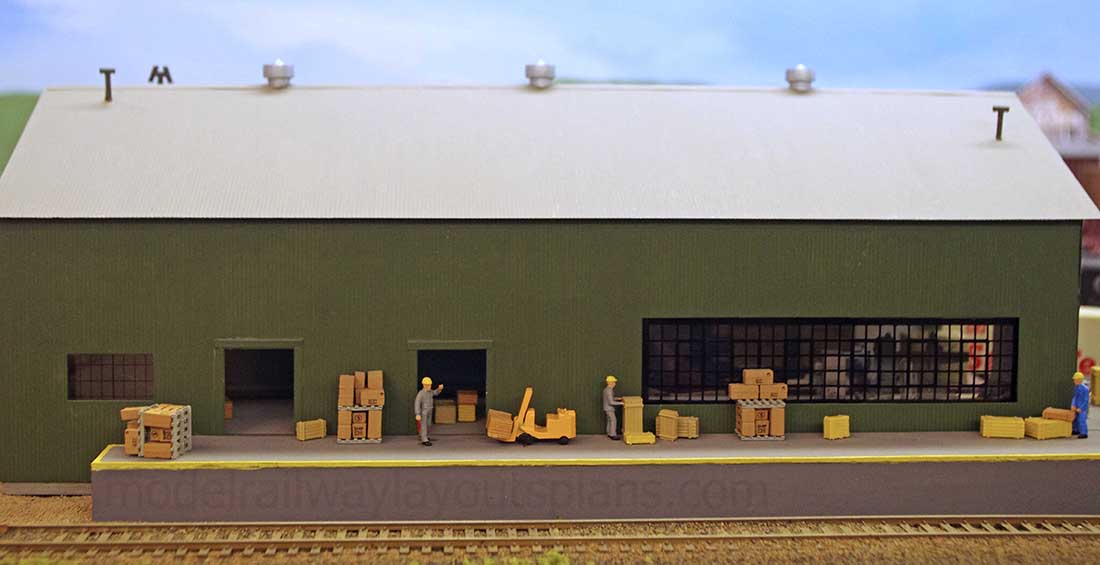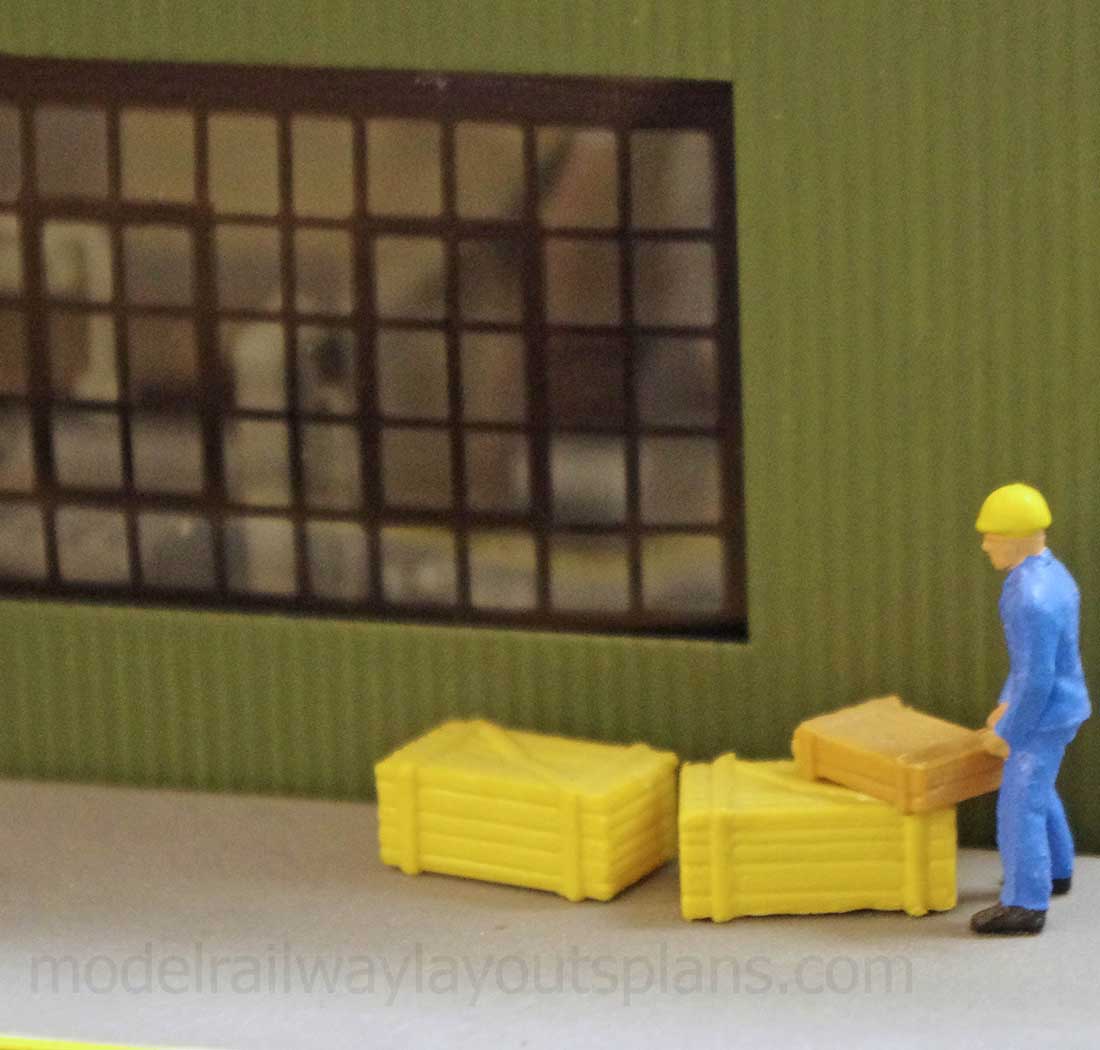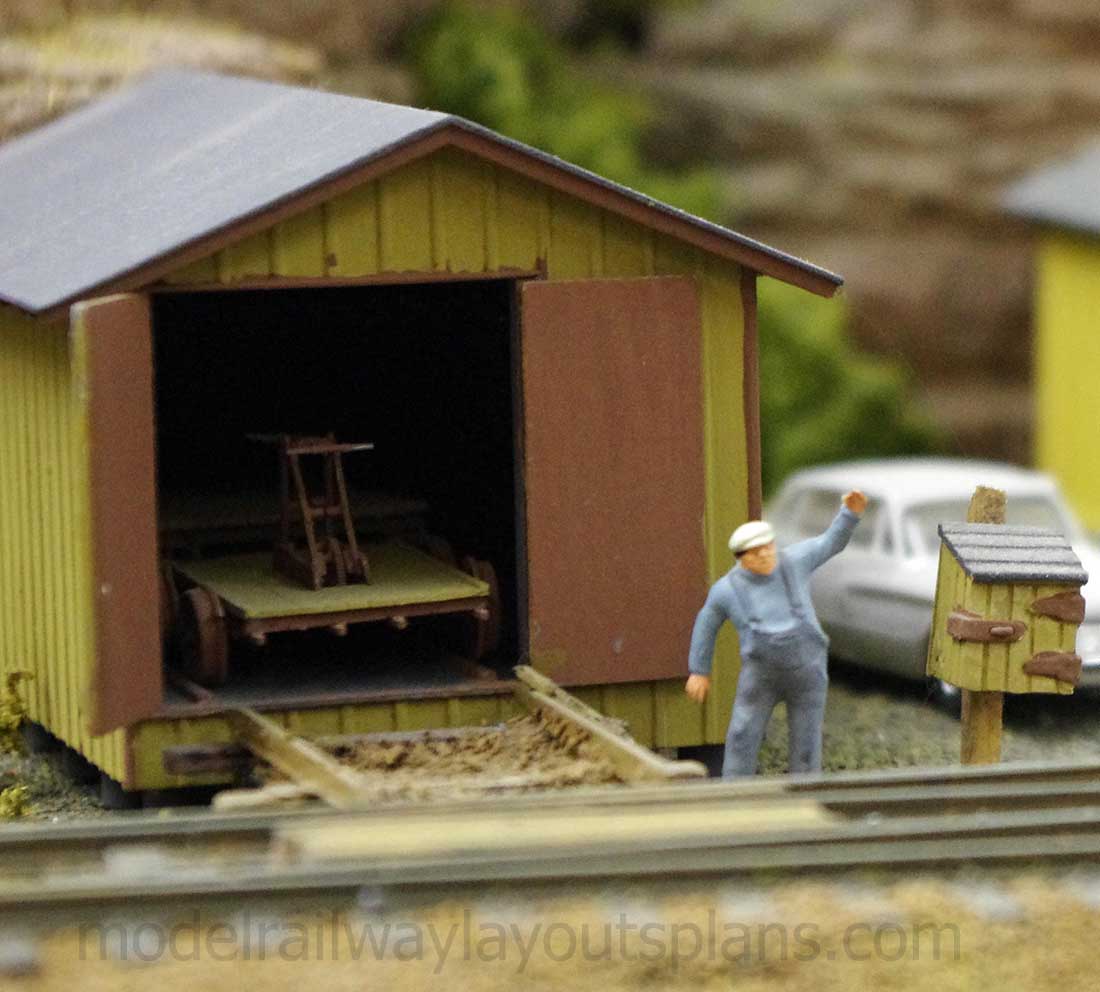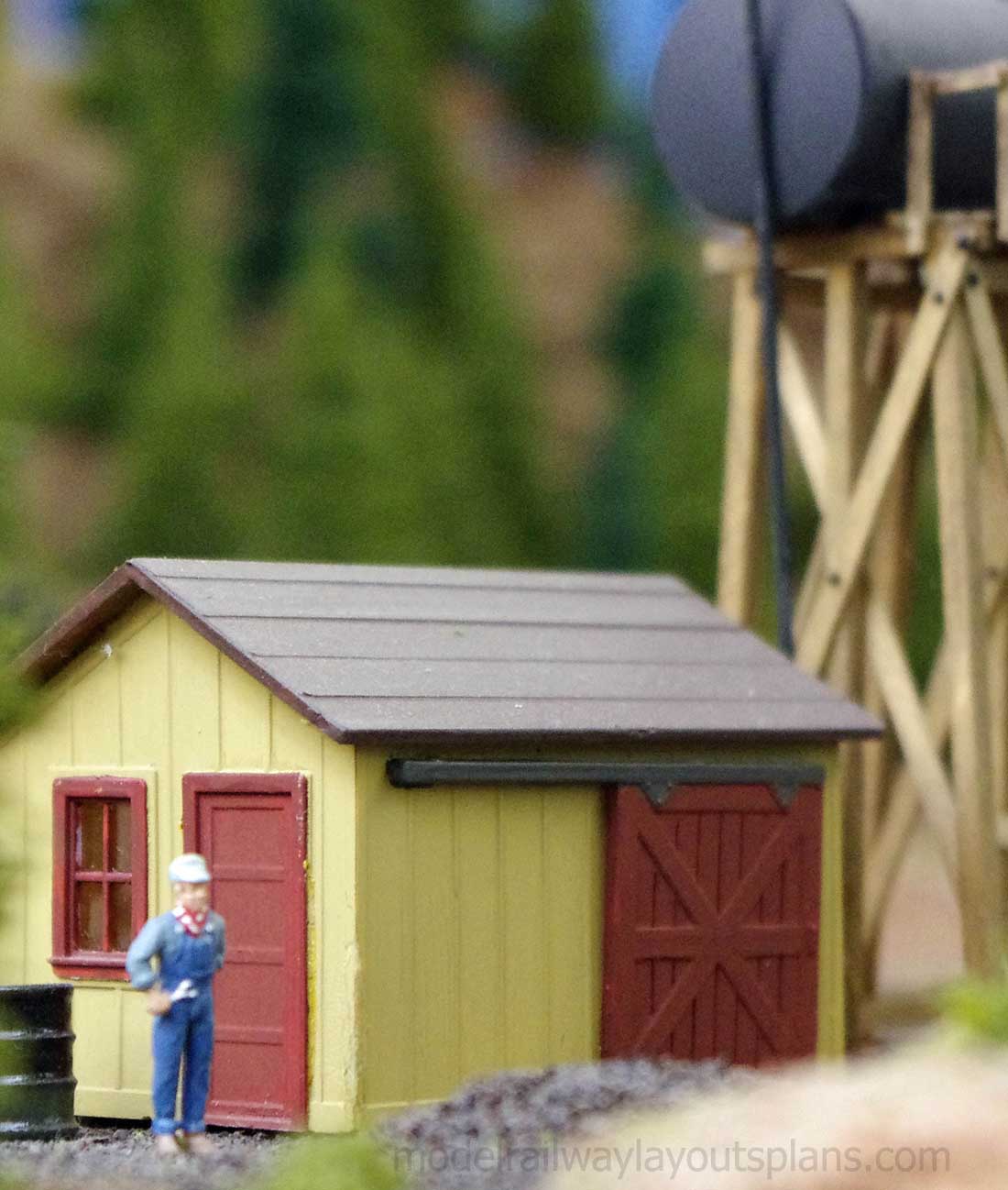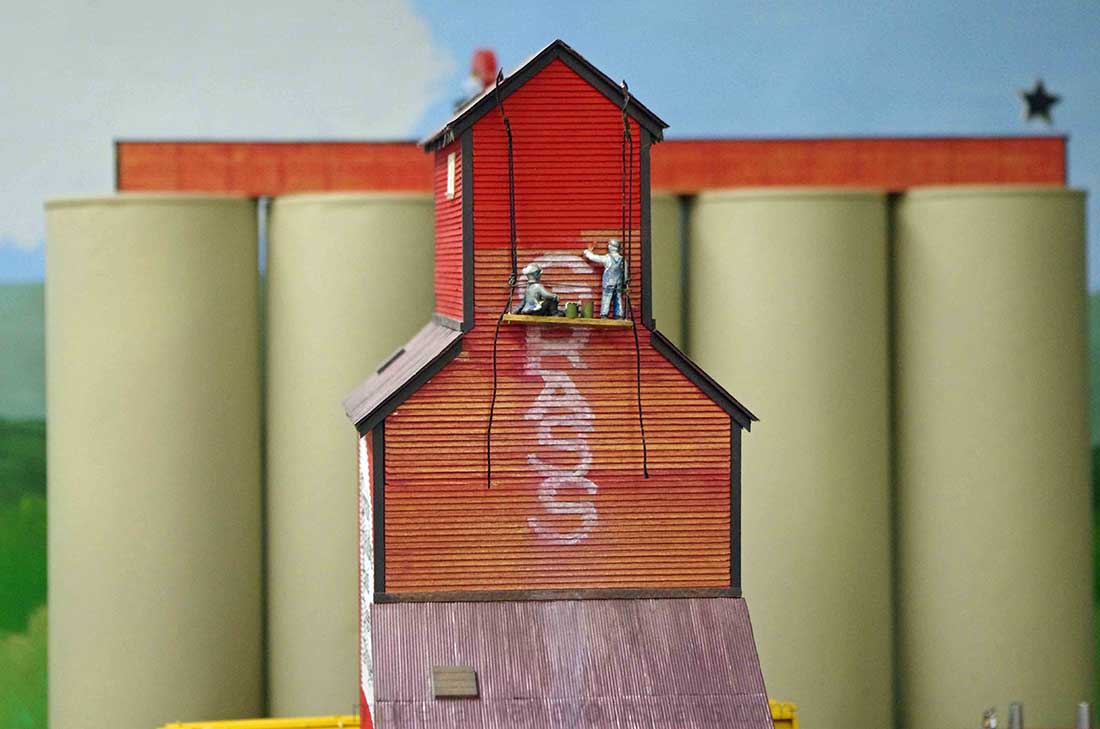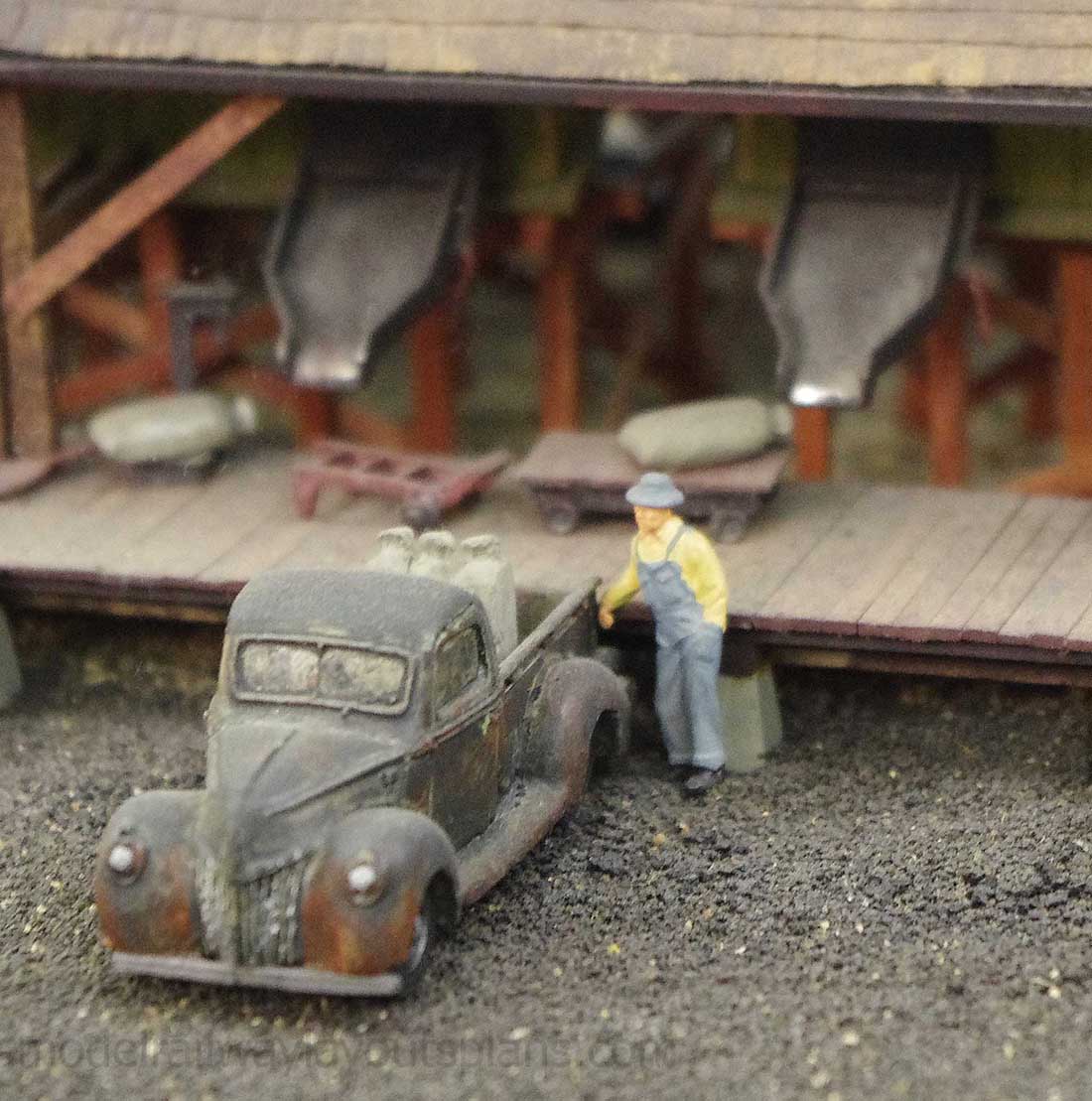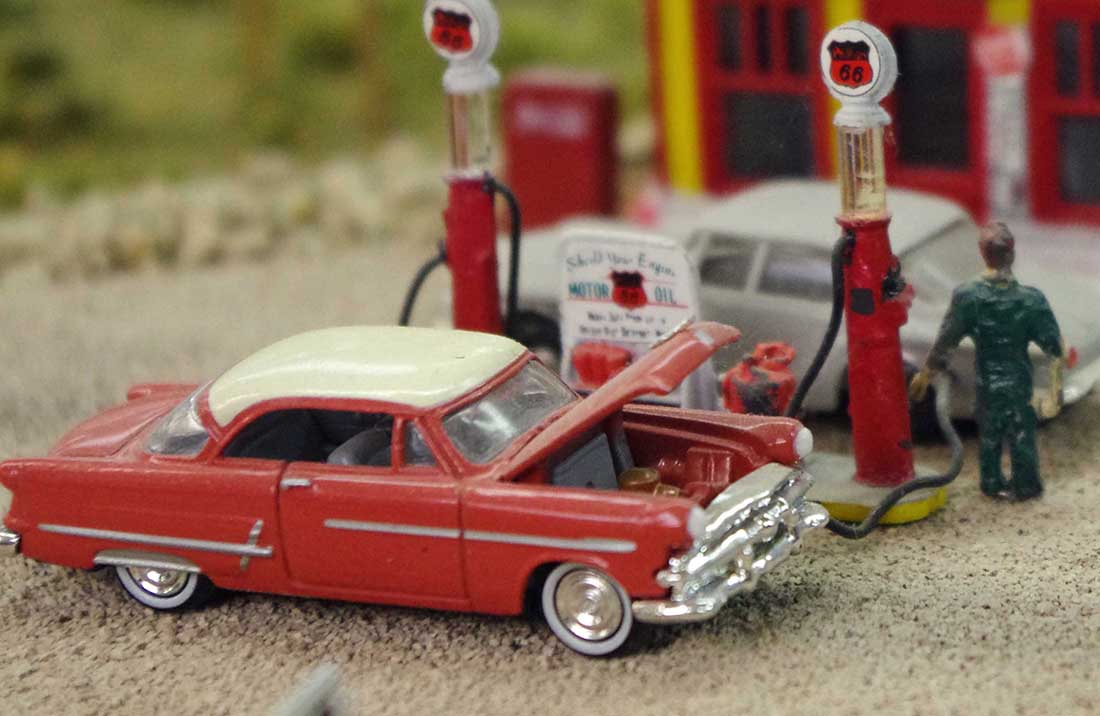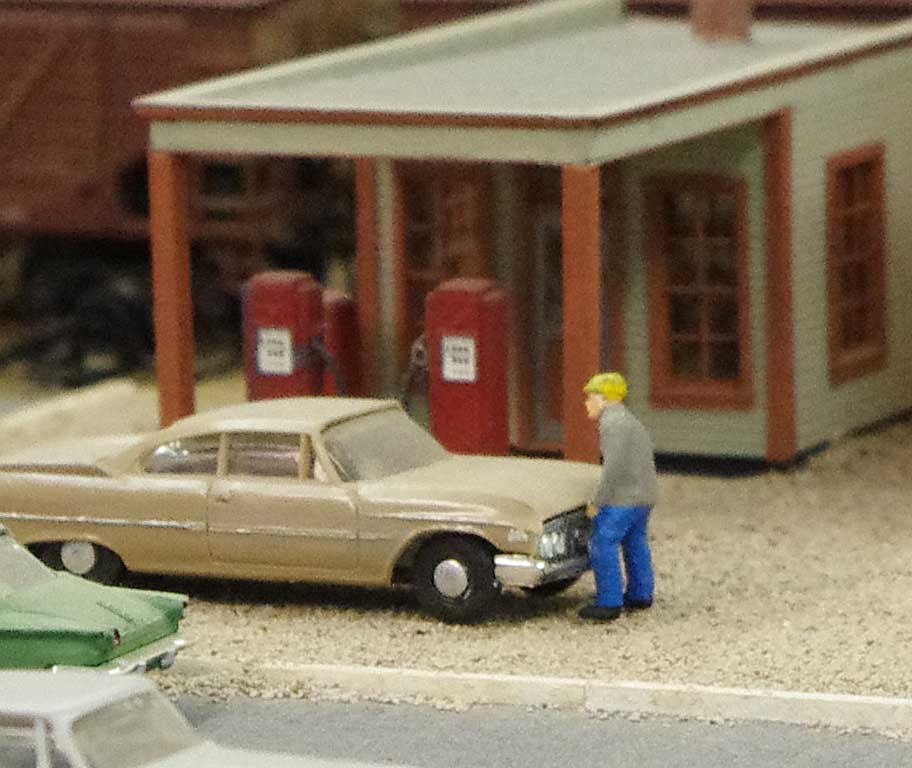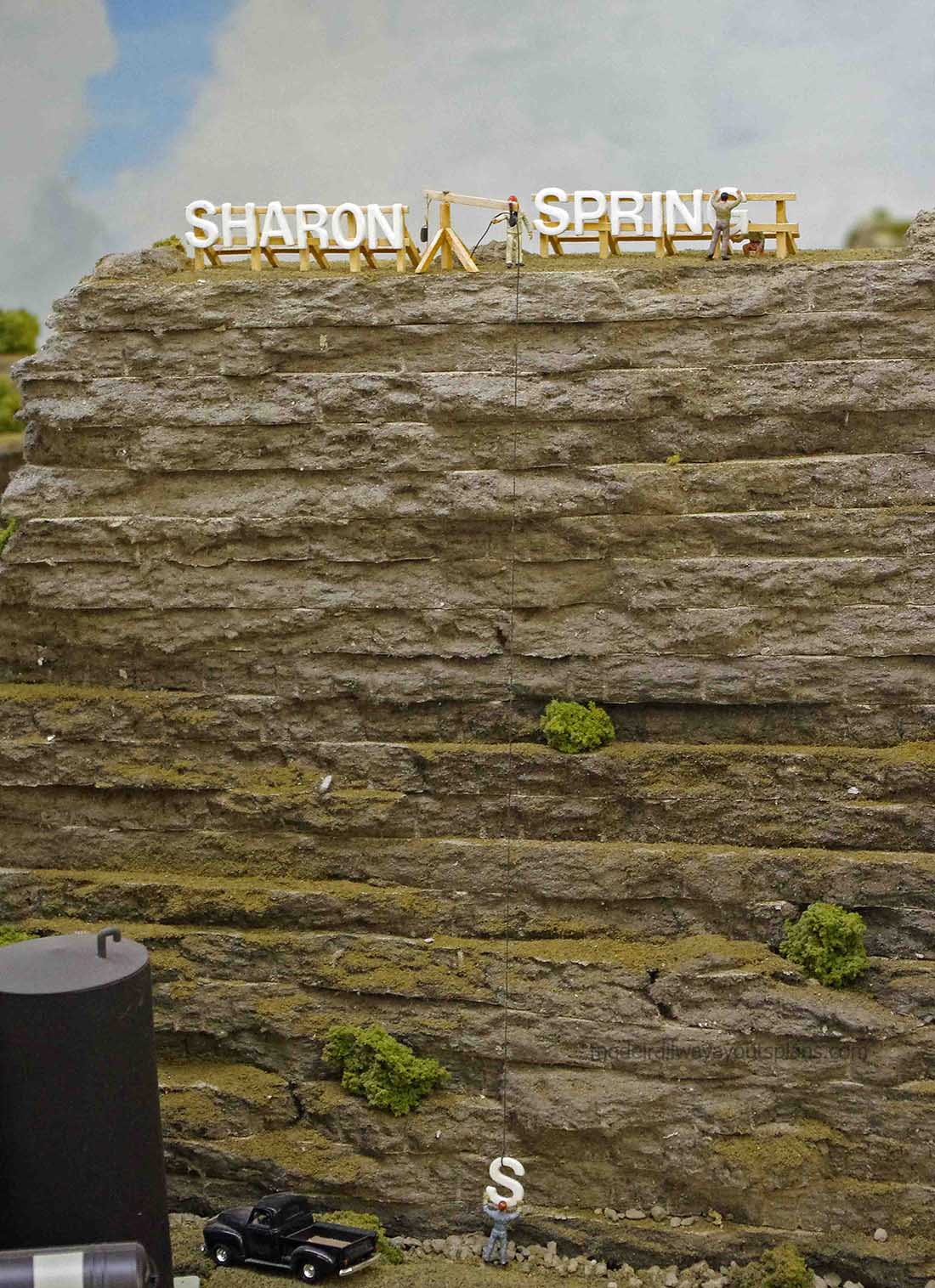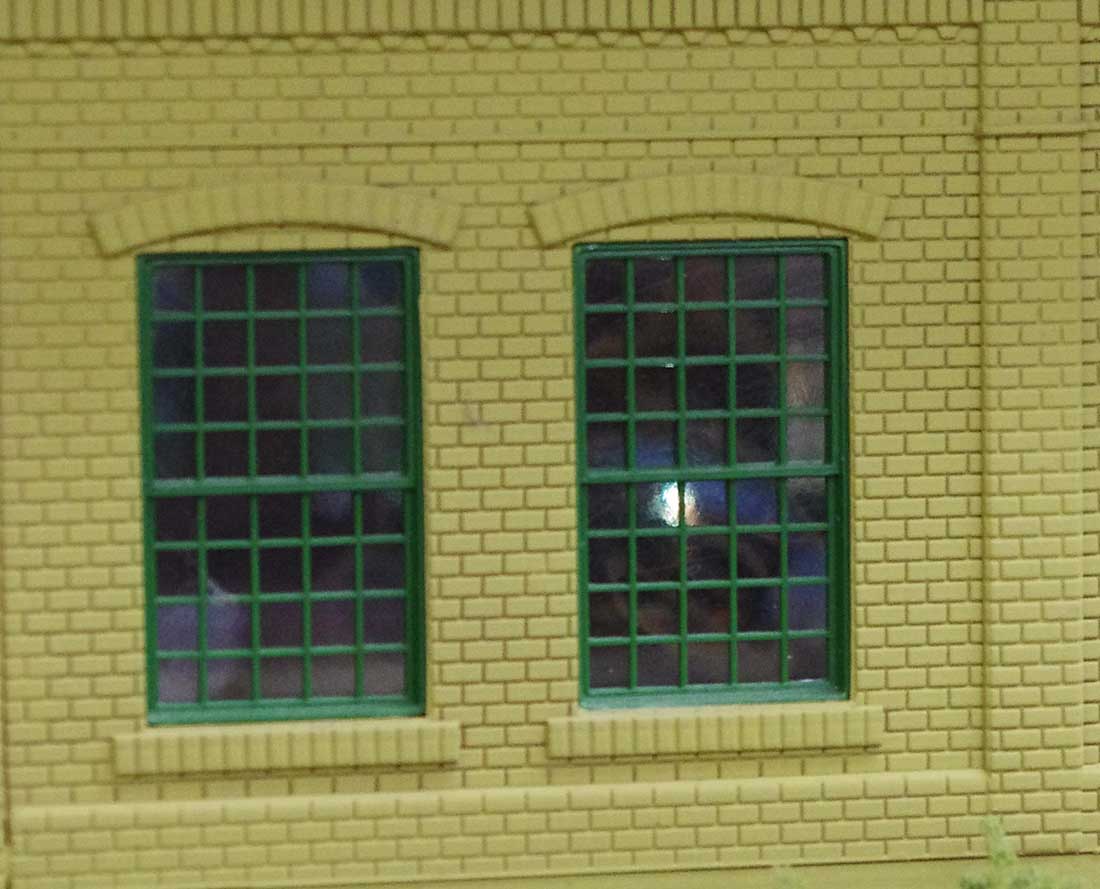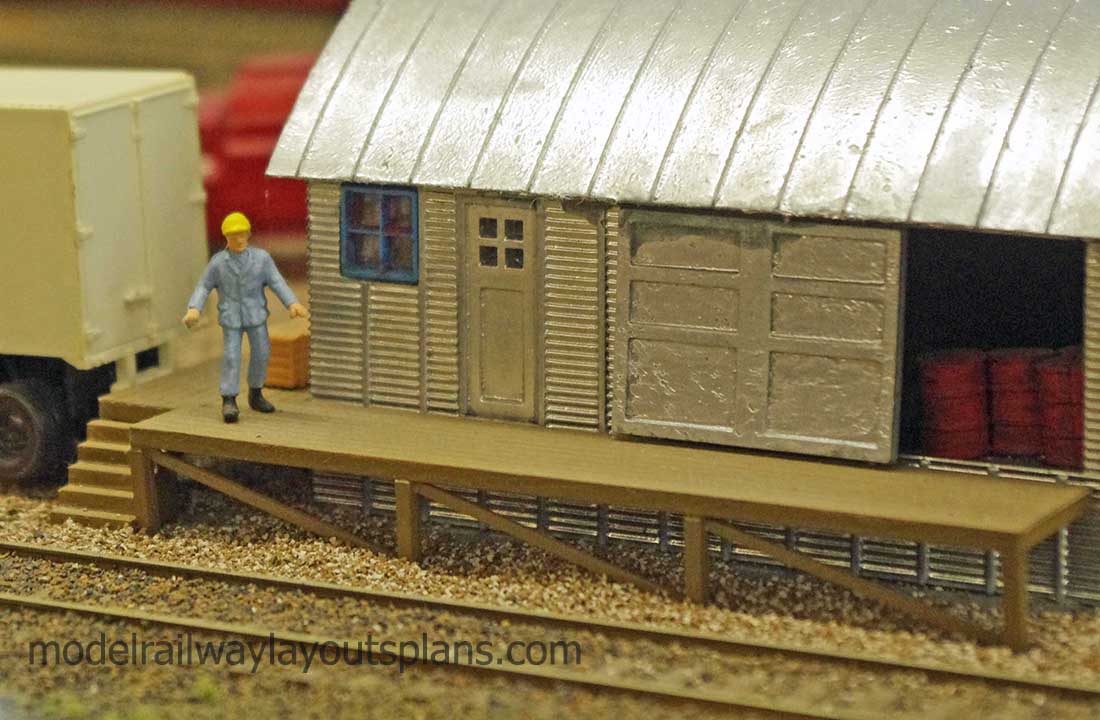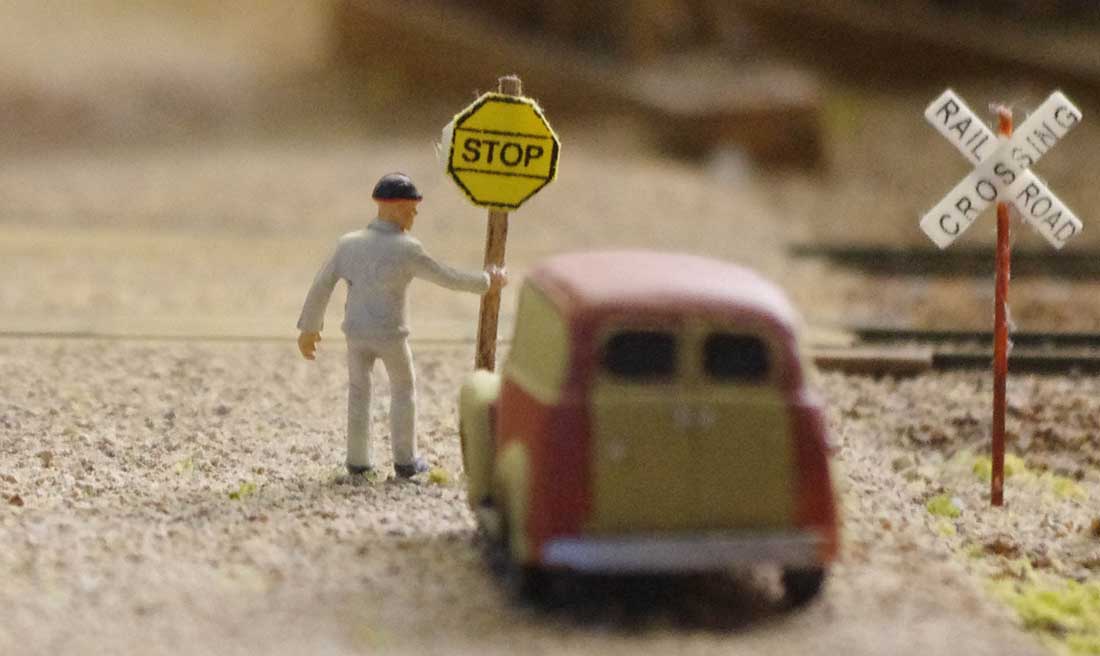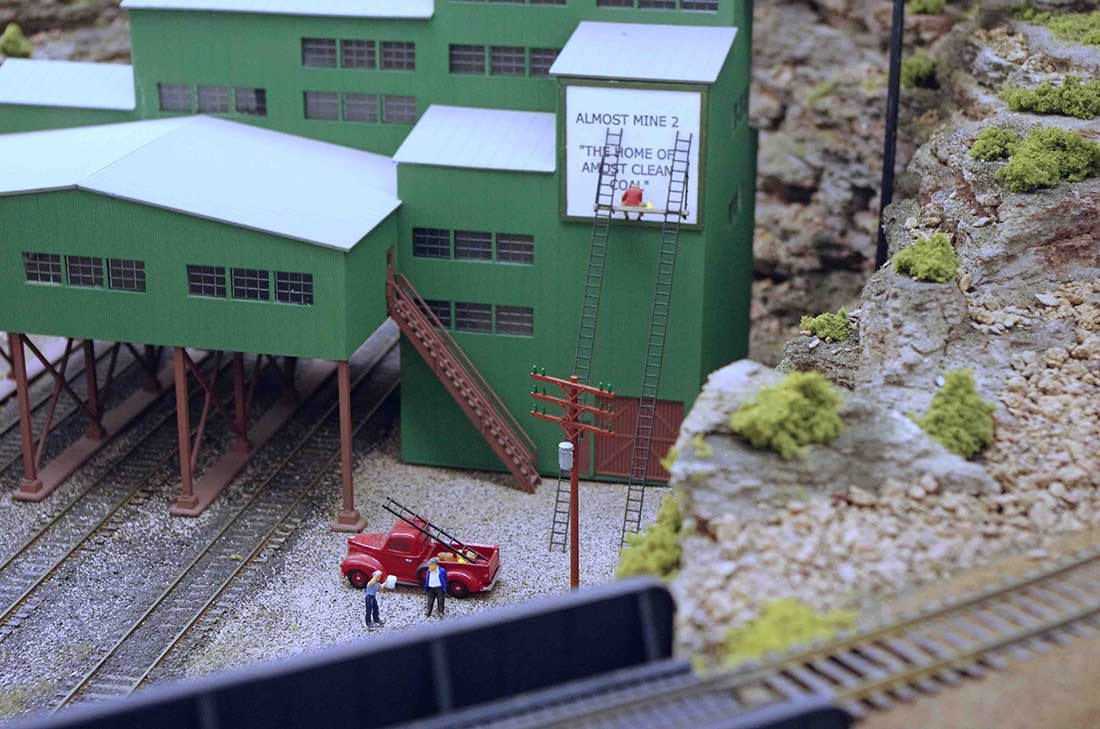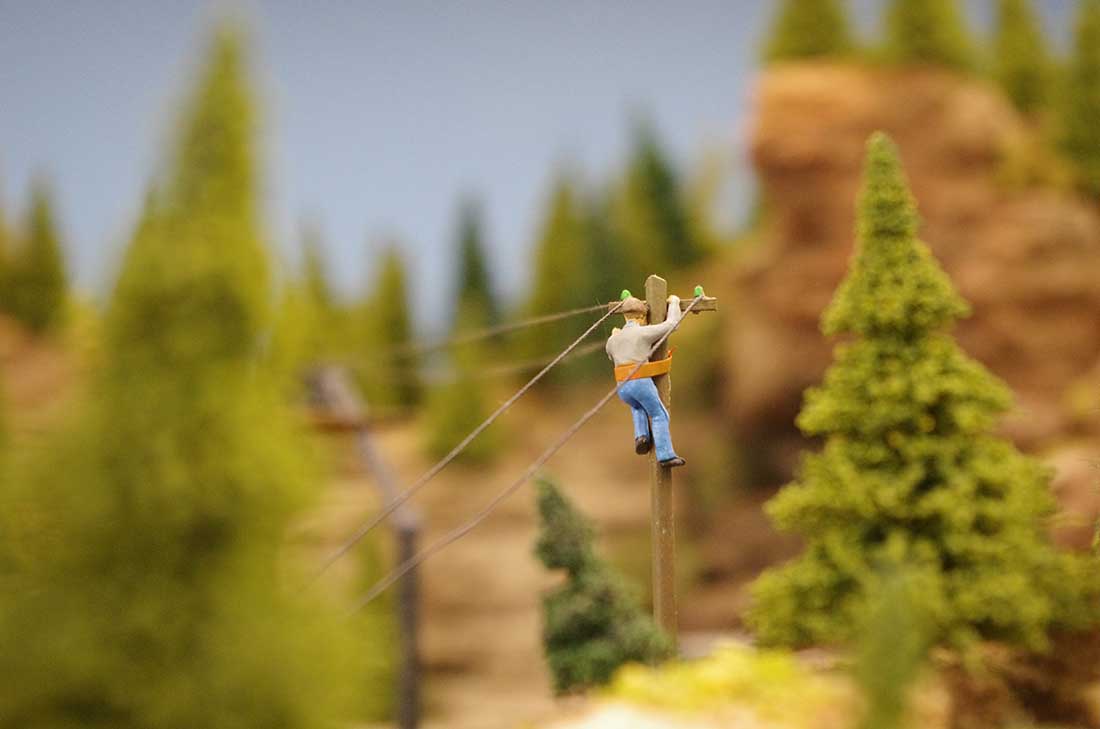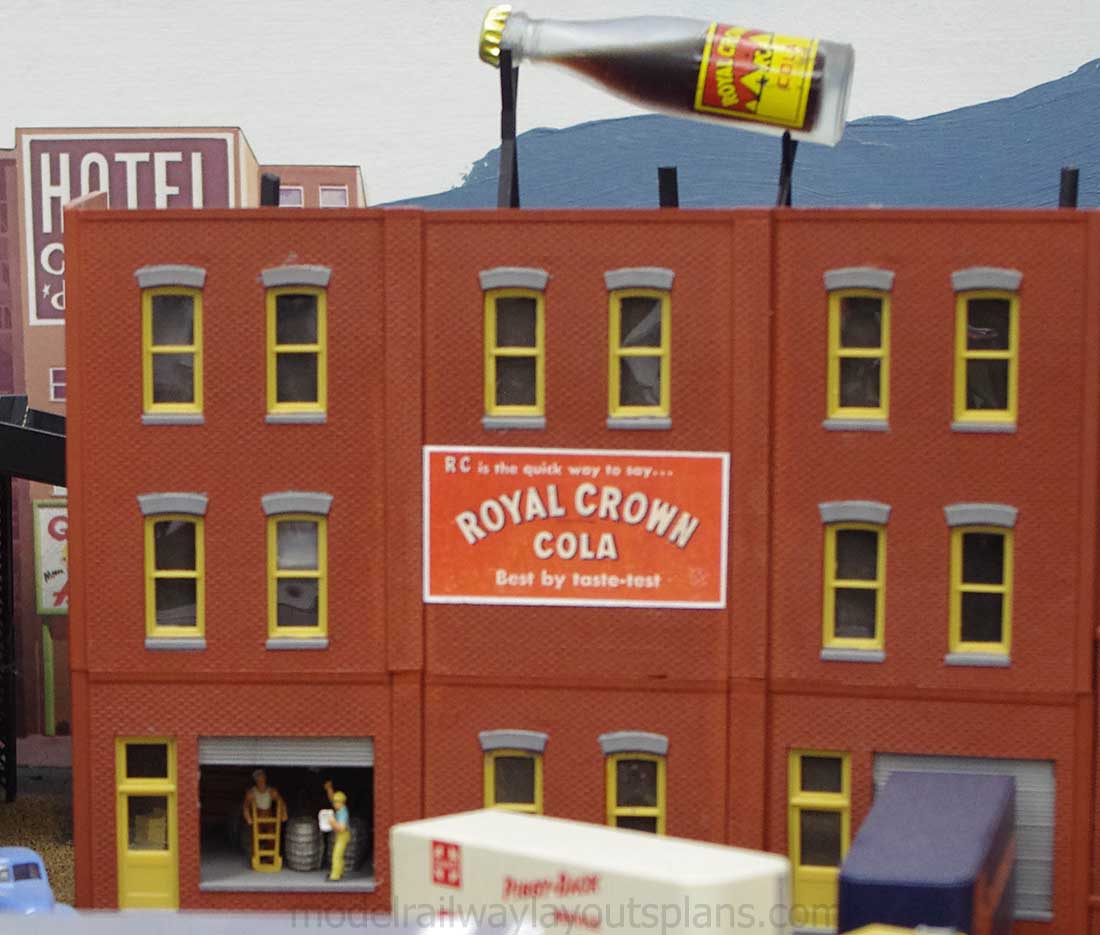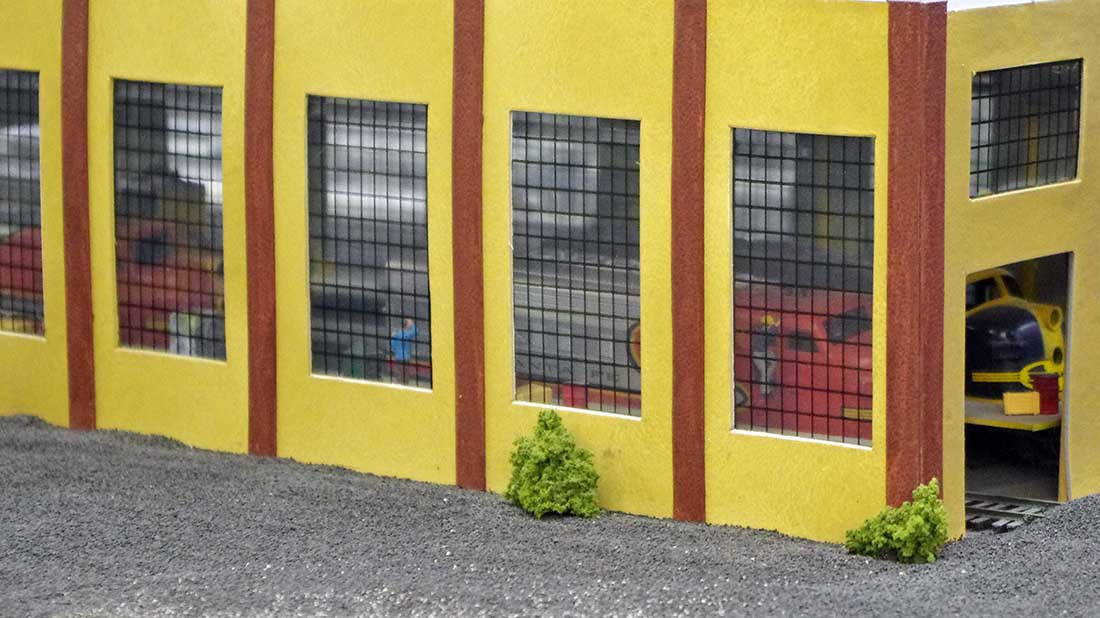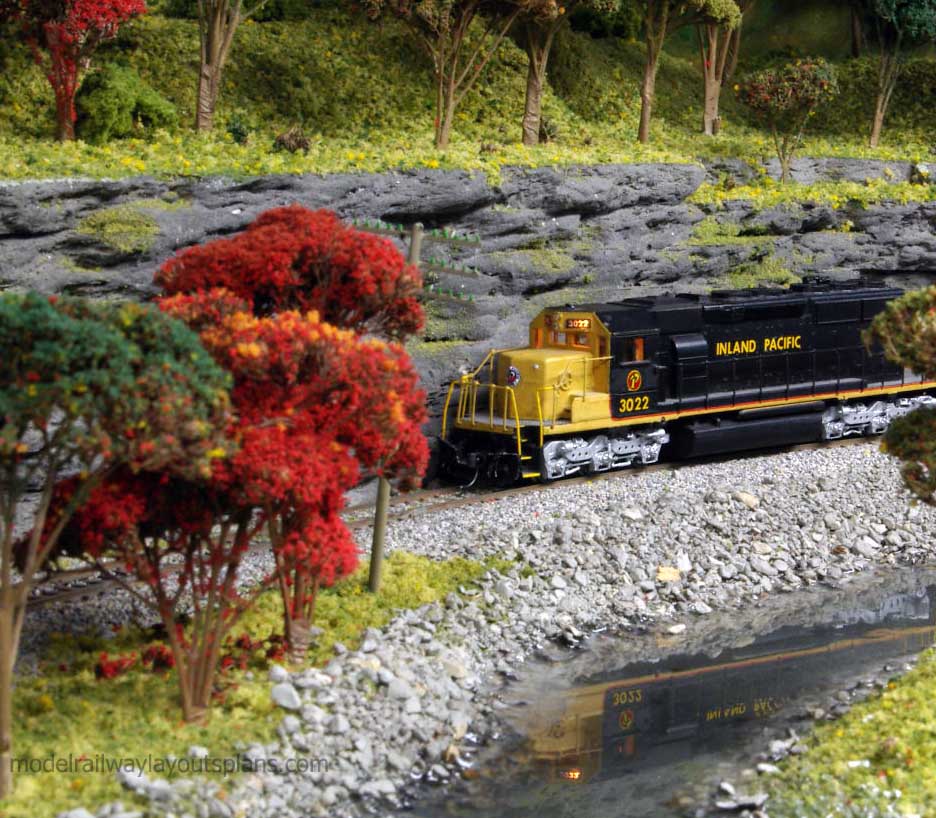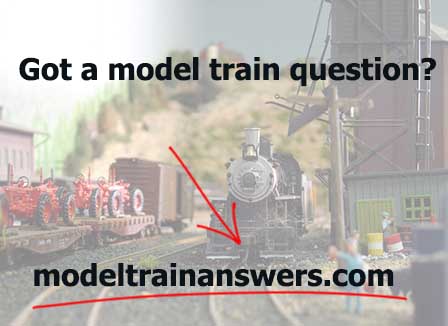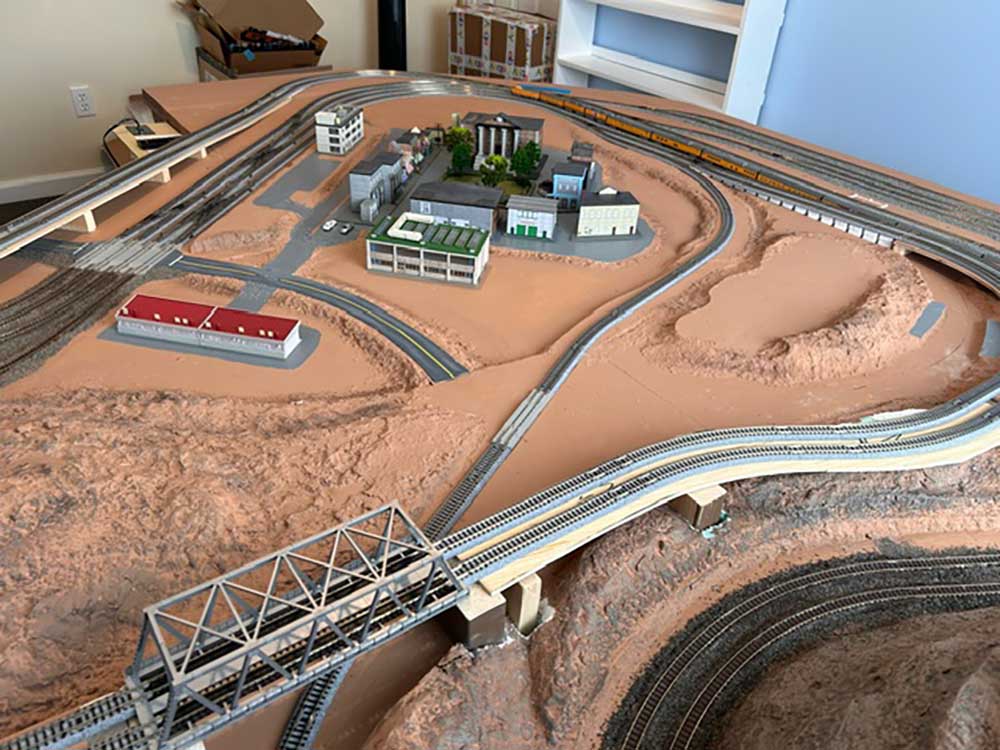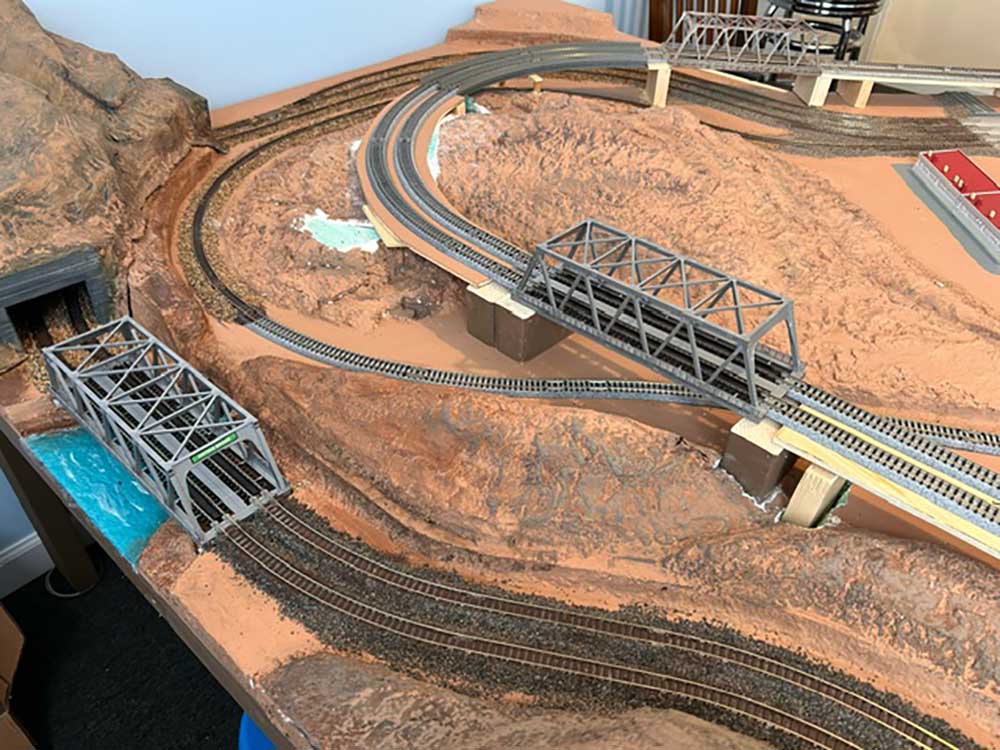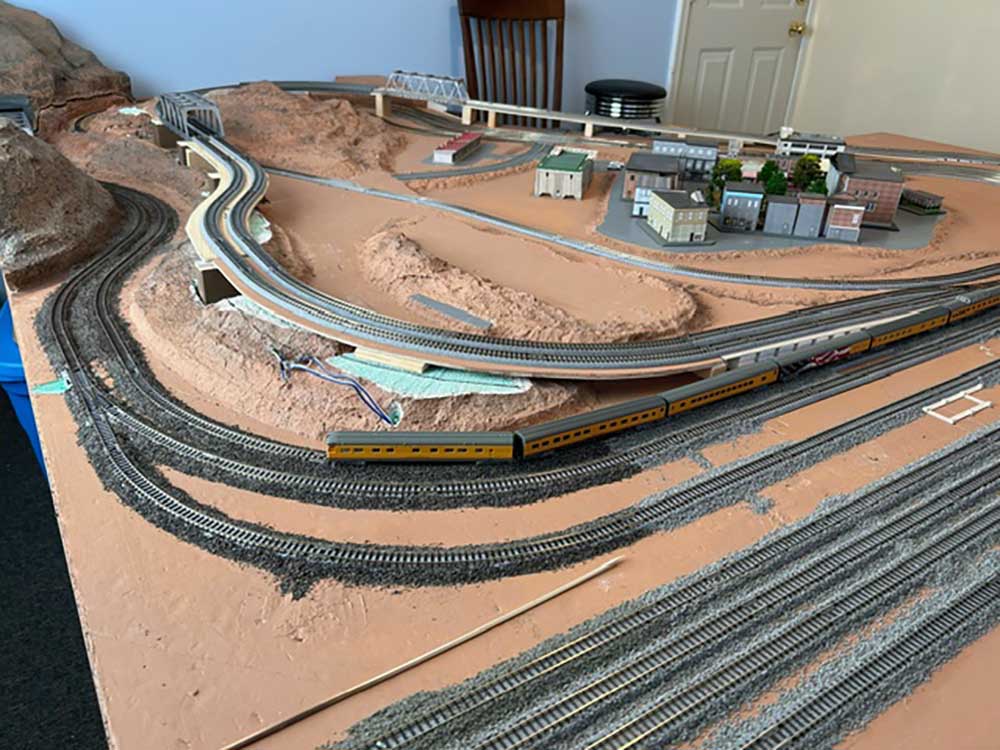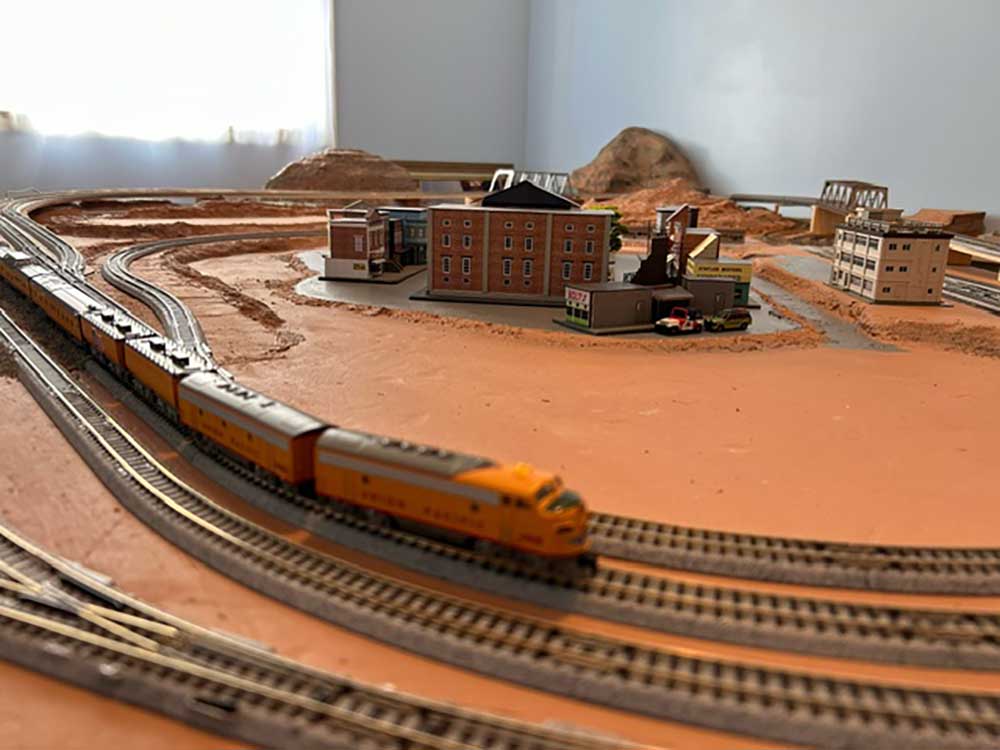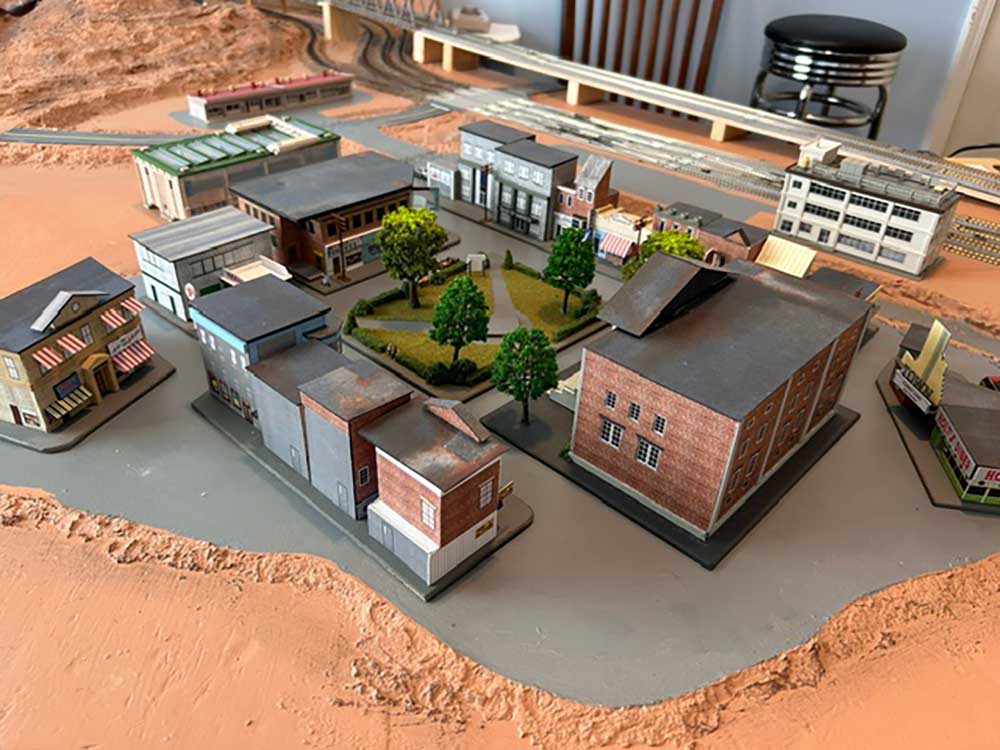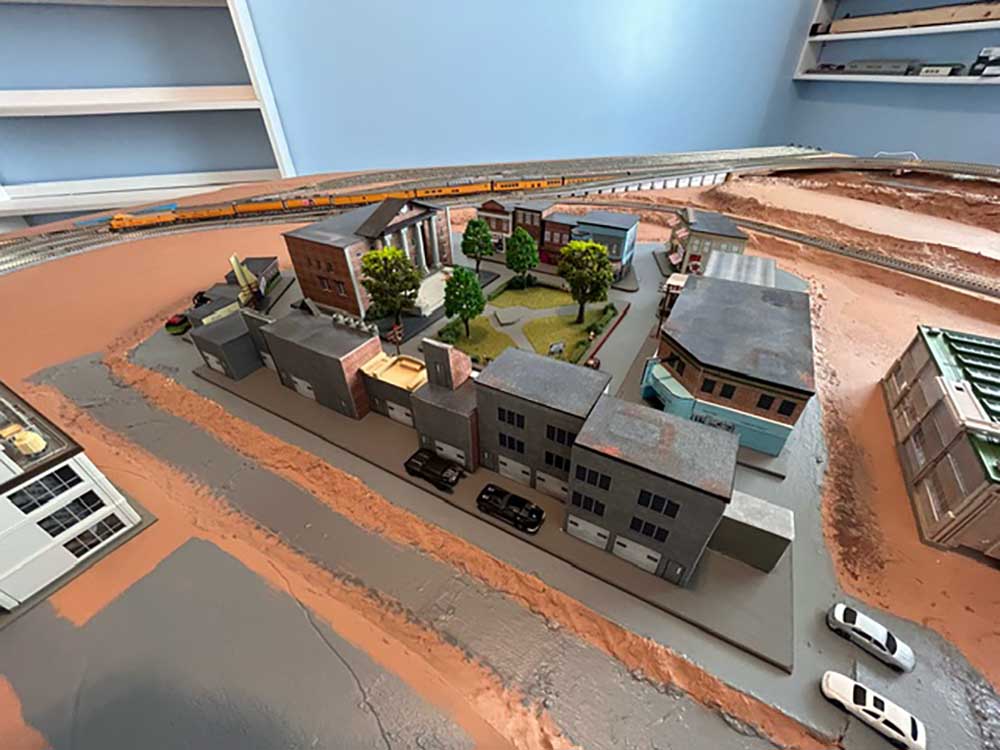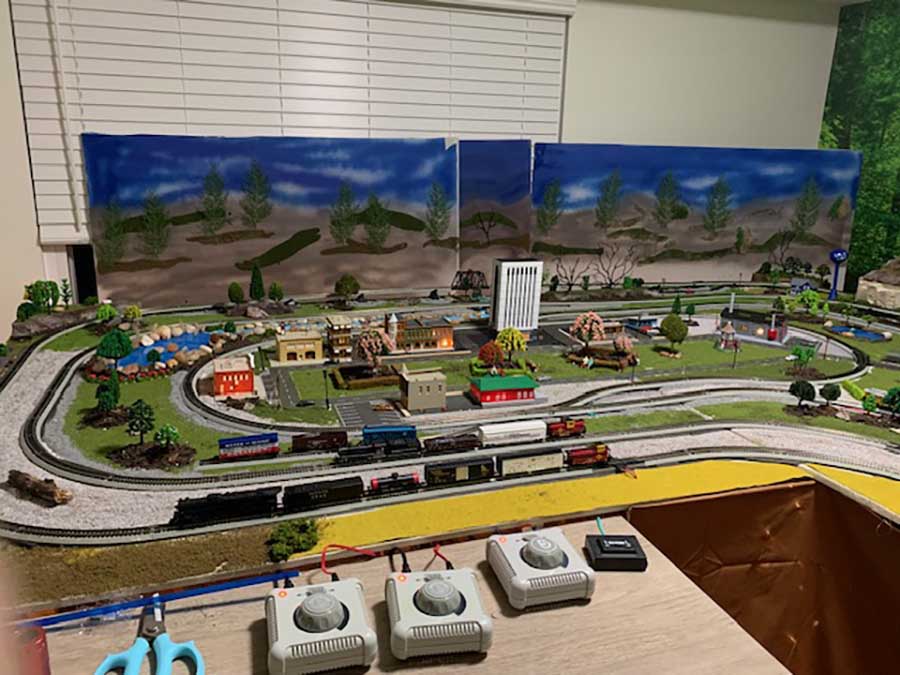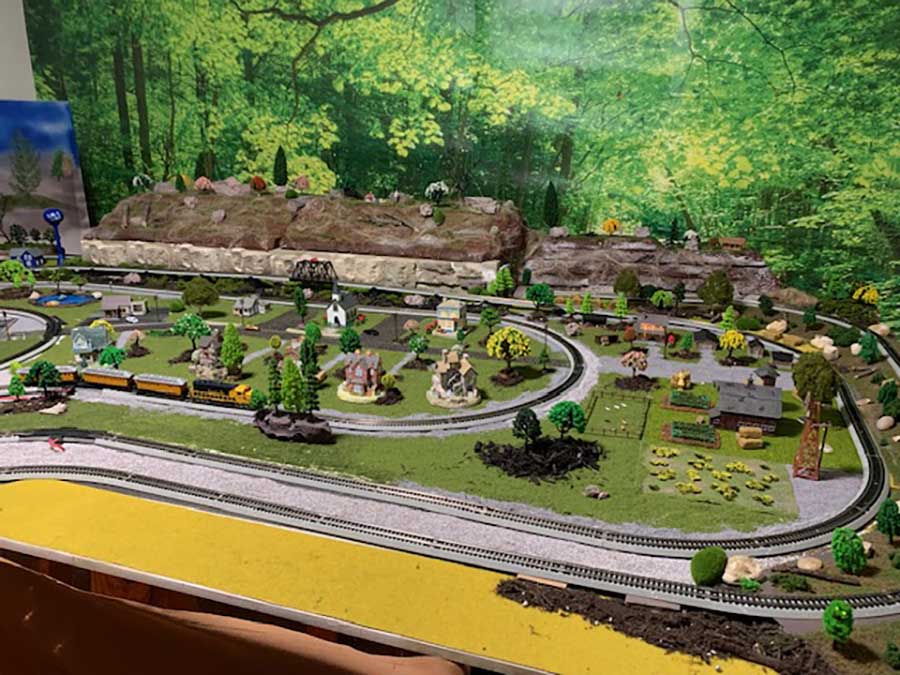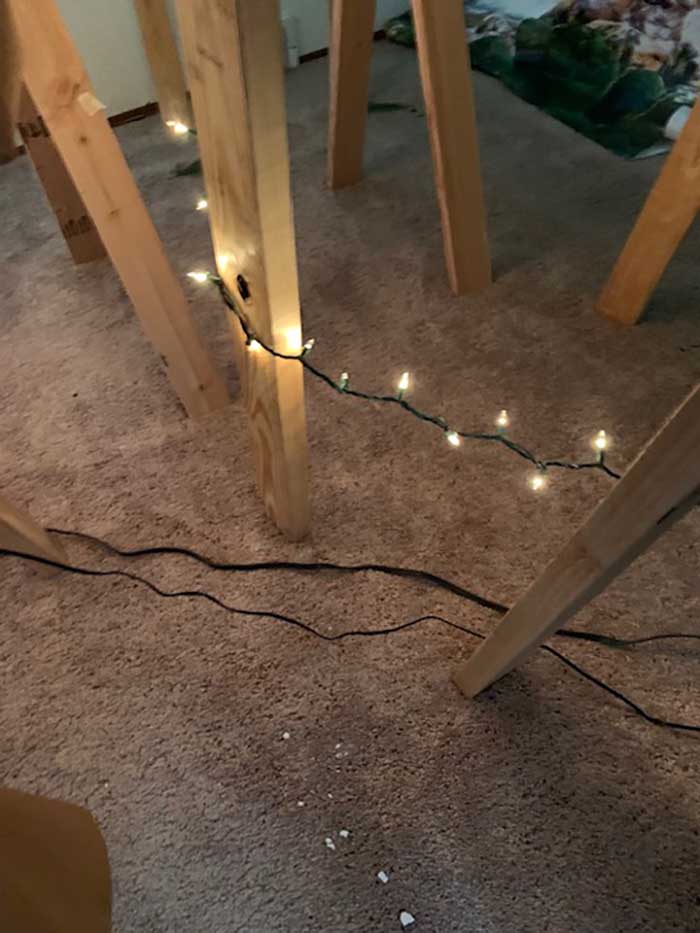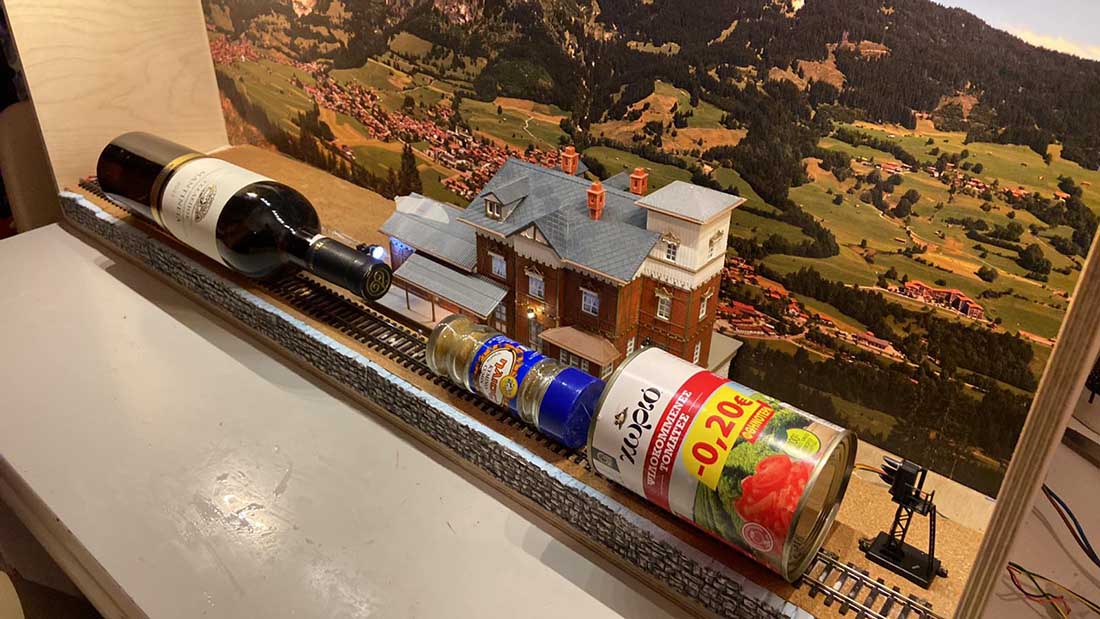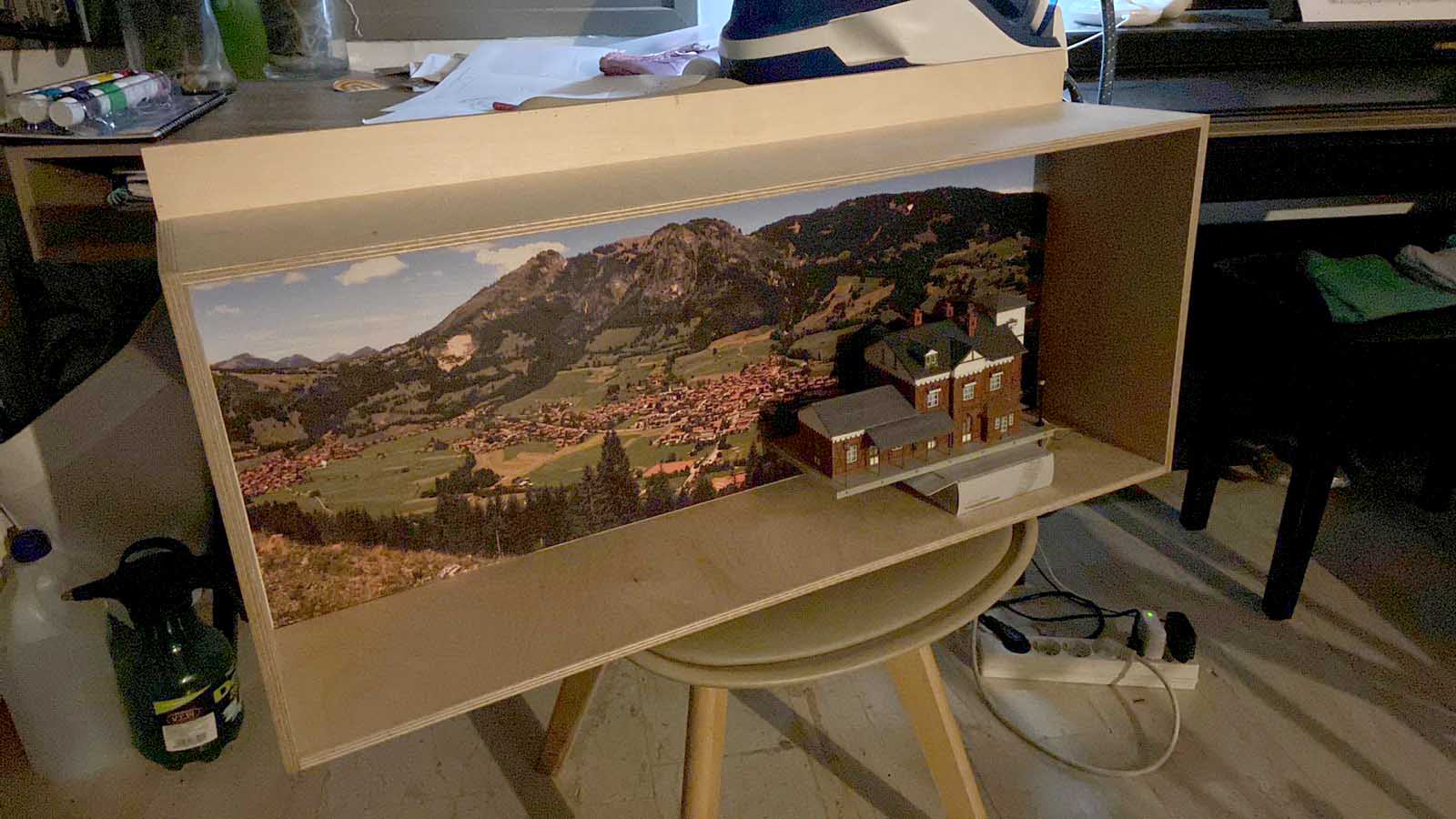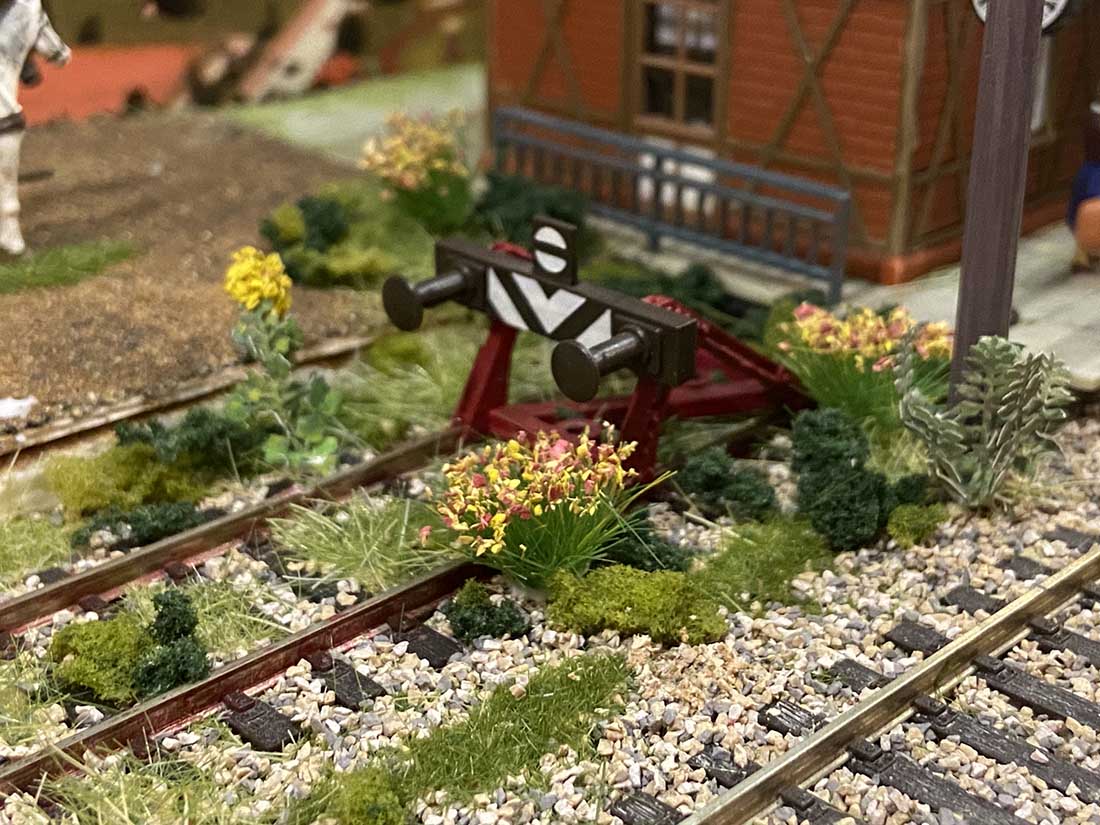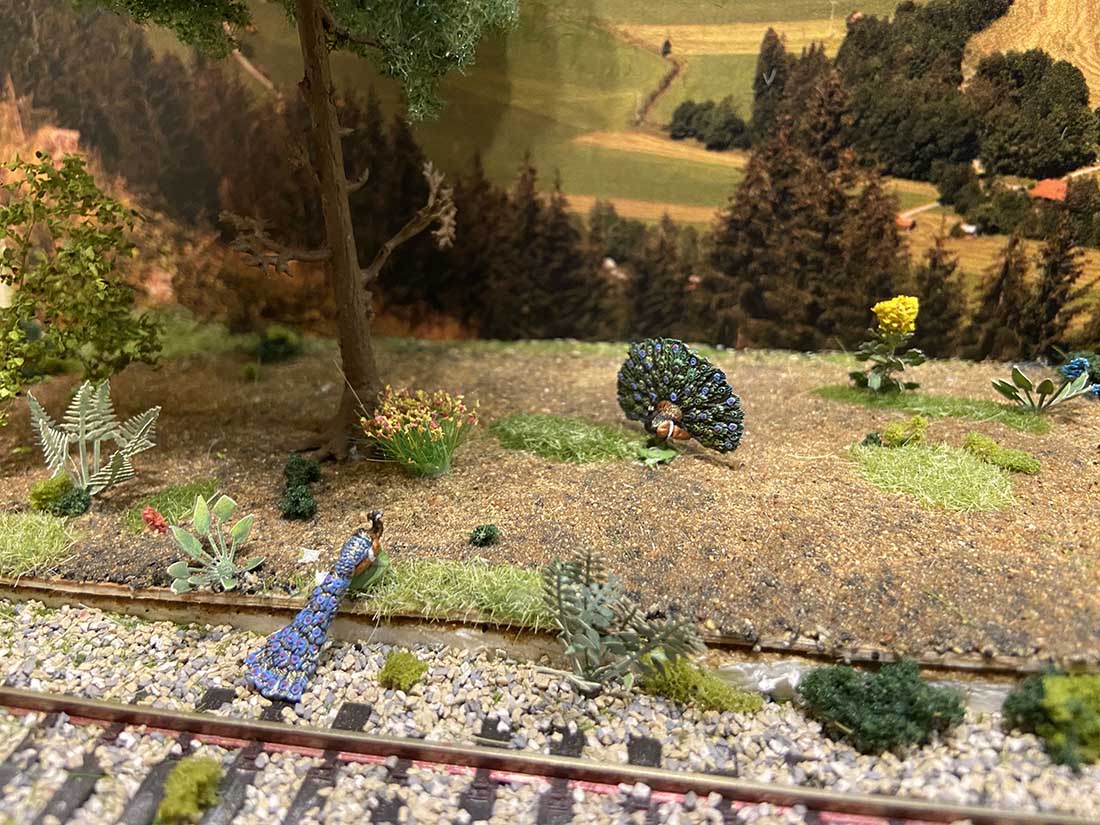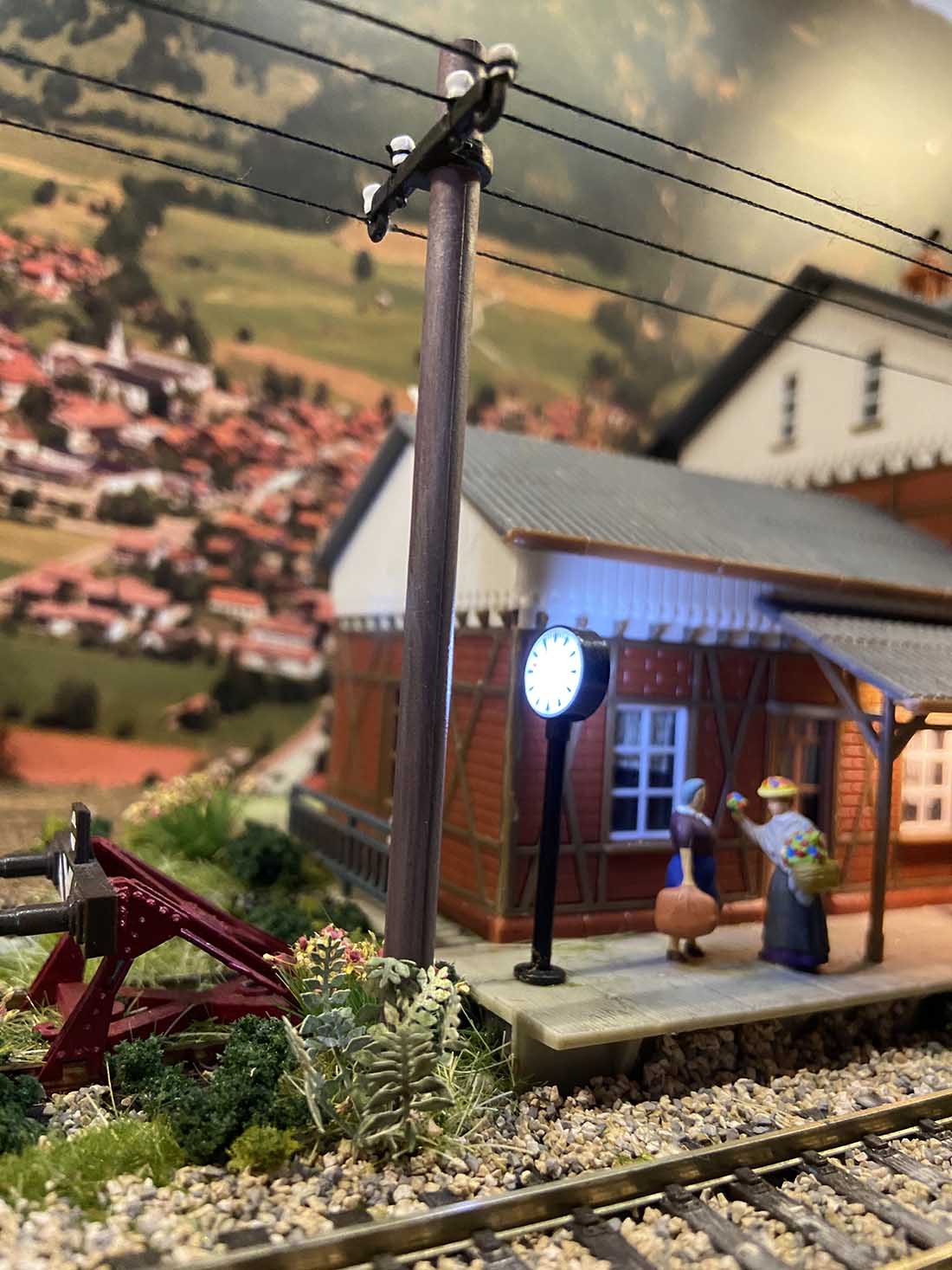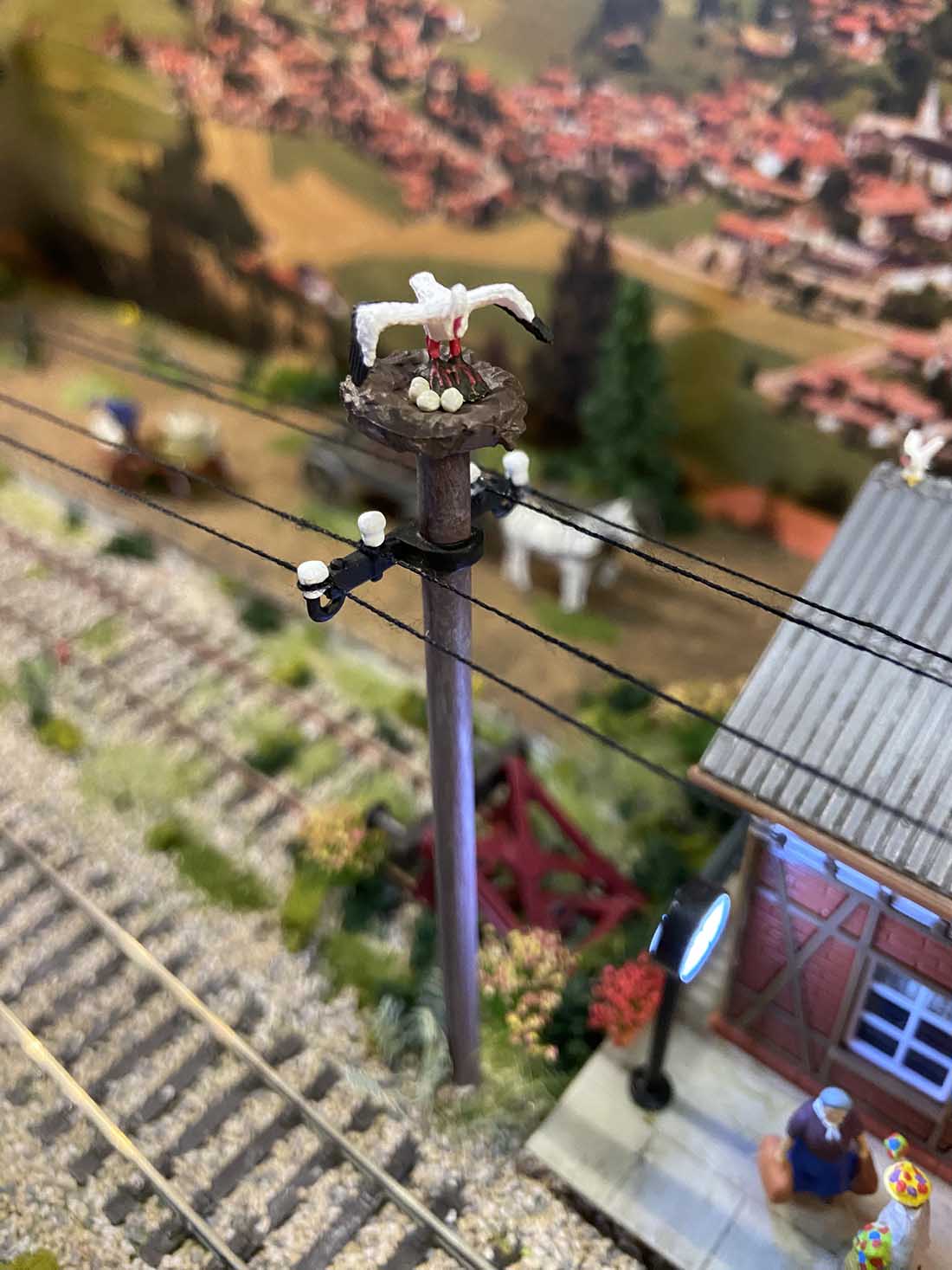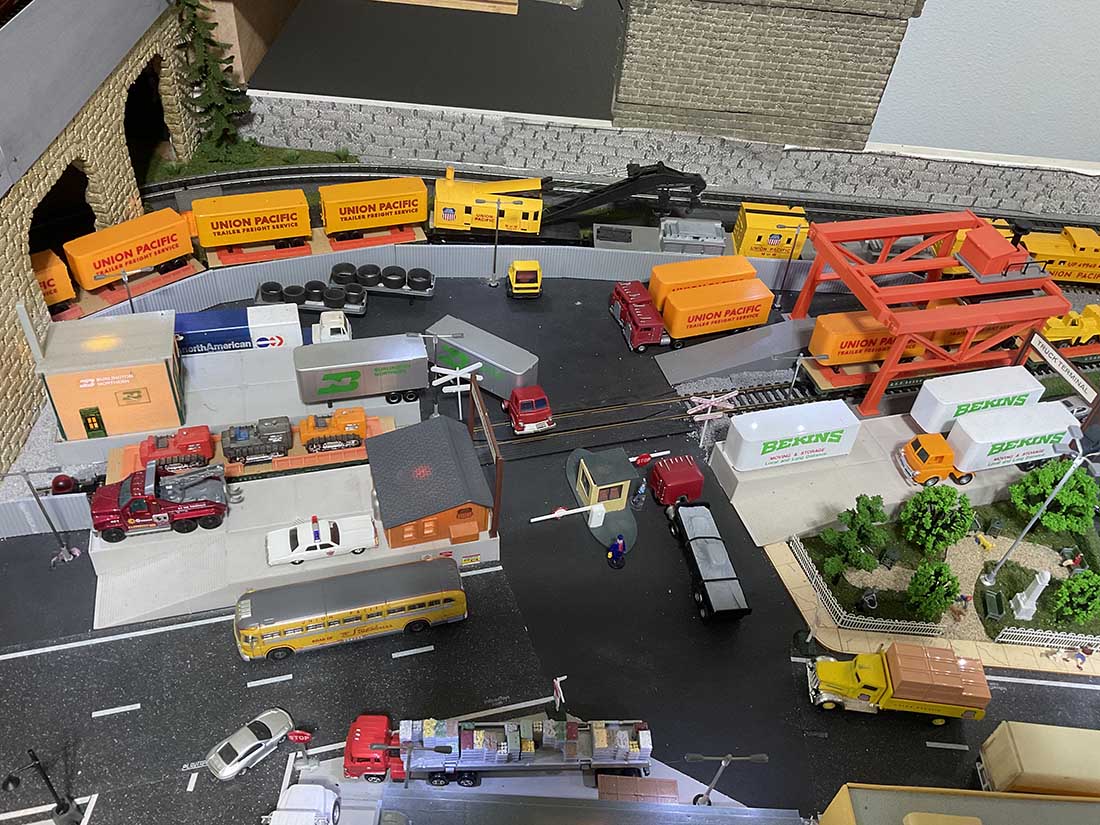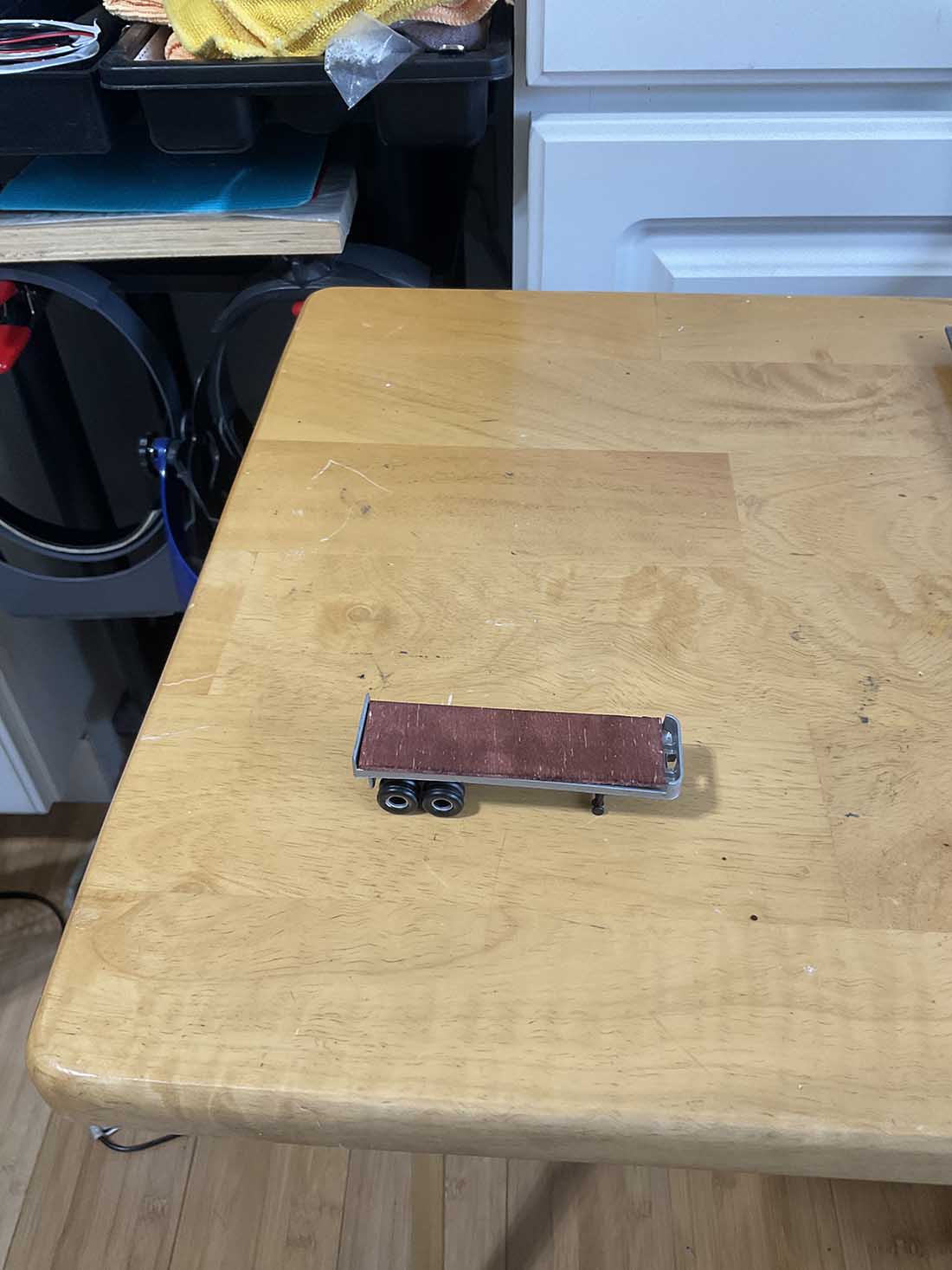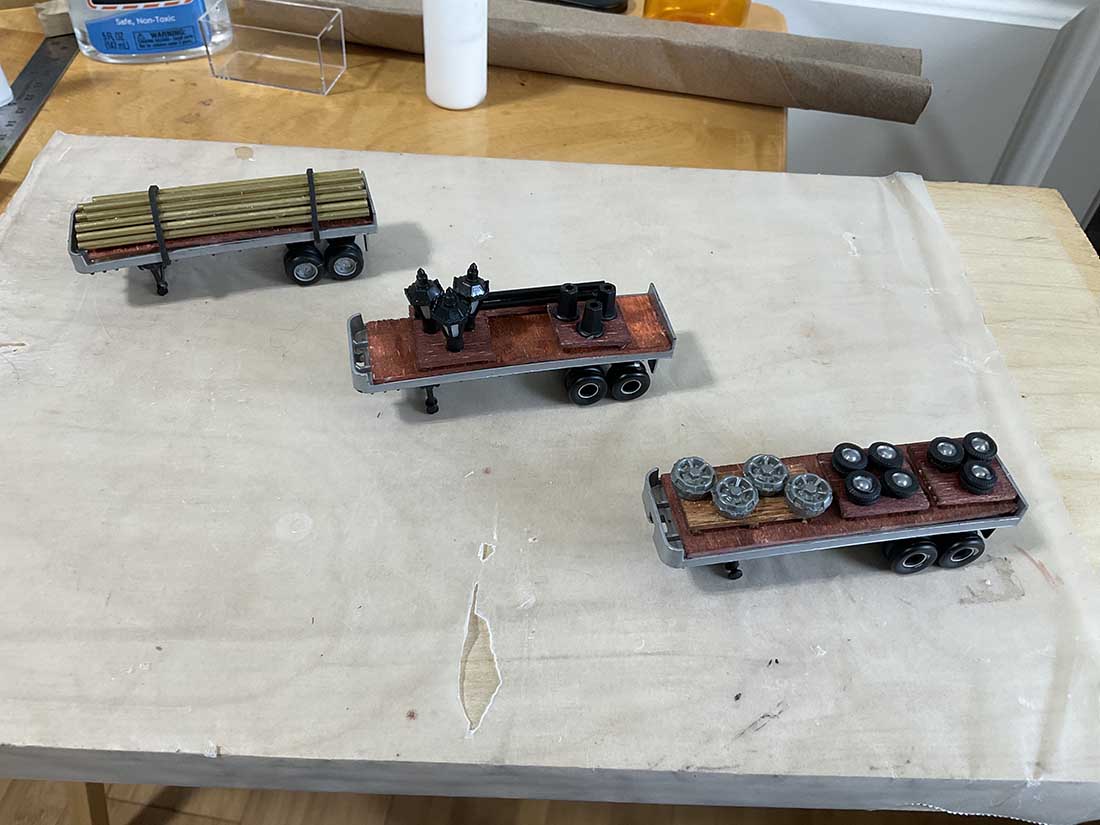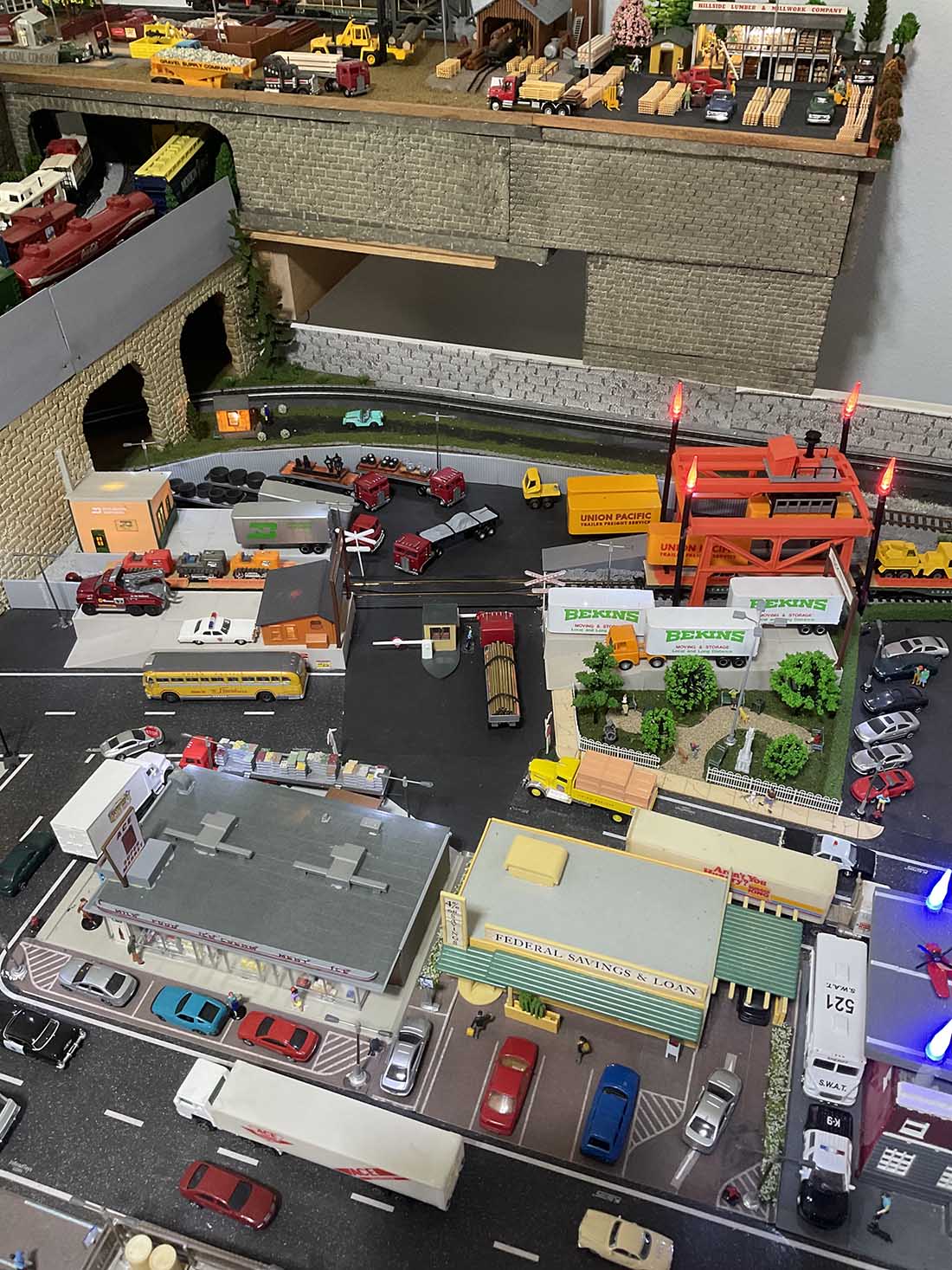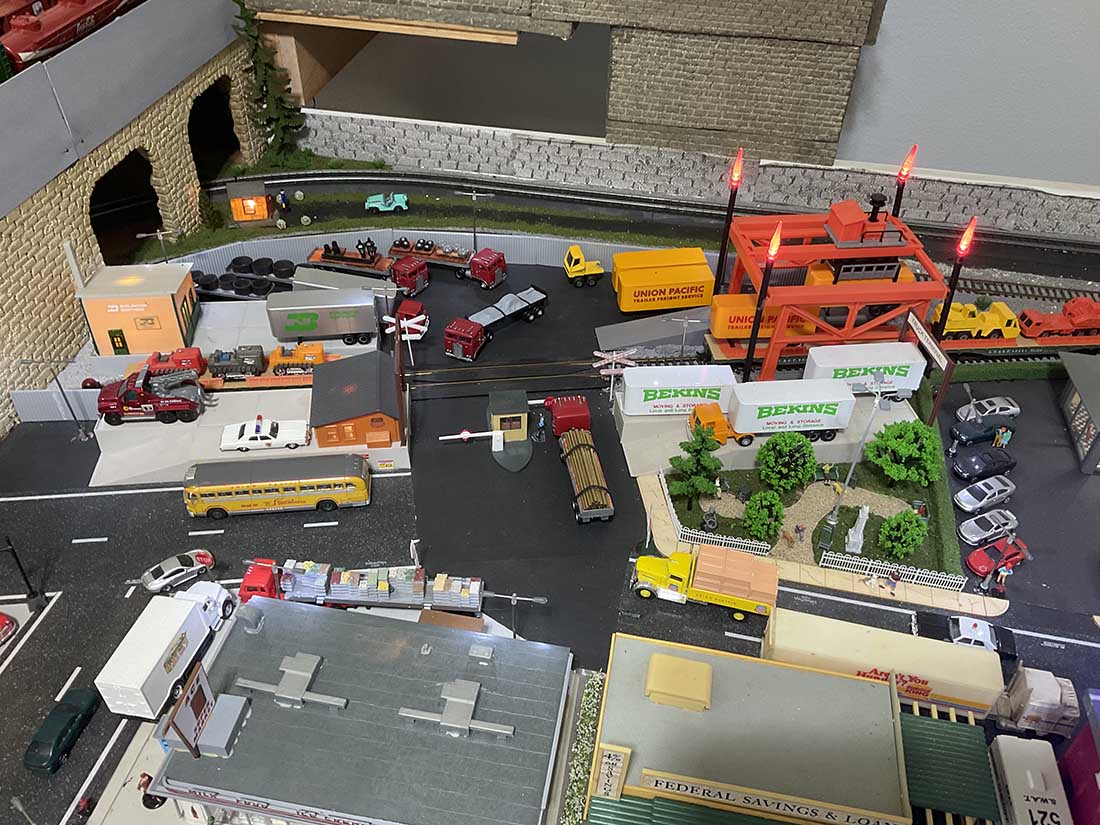Dan’s been in touch with a collection of pics on HO scale railroad workers.
I do love the scenes he creates on his layout – they really do bring it to life:
“I call this set ‘workers on the layout’.
Some may have been posted before. These should be a slightly different view, I think if they are.
Also, I have noticed, when reading the comments, there are new readers or others just looked in for the first time.
Let’s see who is working today around the layout. The loading dock looks busy.
The foreman looks to be giving orders.
Looks heavy.
Someone has to “clean up.”
Working at the wheel repair shop.
Workers at the wheel repair shop.
HO scale railroad workers:
Getting ready for the next locos to be serviced.
Here’s one now.
A worker at Burnt Lake.
The painters are sill at work.
Probably not a worker. He is just waiting around.
Service station attendant.
HO scale railroad workers:
At another service station on the layout.
The new sign at Sharon Springs getting the finishing touch.
A welder inside the wheel shop.
At the oil depot.
At Burnt Lake. Getting the luggage ready.
The all important crossing guard.
The town of Almost is having a boom. The local coal mine is producing low sulfur coal and the station is needing an expansion.
Another view about who has to pay for the mistake in the sign.
A lineman working at the turntable at Burnt lake.
Section workers at Ruth. That is a station that leads to Burnt Lake.
Worker at the Chromite mine.
Loading the cola.
A peek in the engine house.
Al, there are a few more folks around the layout. When I find them I will post if you want them. I am getting close to running out of interesting things on my layout. However, either good or bad, three other layouts I have done that might be of interest. Here is a sample.
Sample photo is from the Inland Pacific a fictional railroad from Indiana to points west and north west.
Dan*
A huge big thanks to Hall of Fame Dan – he really is the gift that keeps giving.
I really enjoyed his collection of HO scale railroad workers pics.
I do love the posts with captions for the pictures – these ones spring to mind:
That’s all for today folks.
Please do keep ’em coming.
And if today is the day you get started on your layout, the Beginner’s Guide is here.
Best
Al
PS Latest ebay cheat sheet is here.
PPS More HO scale train layouts here if that’s your thing.
